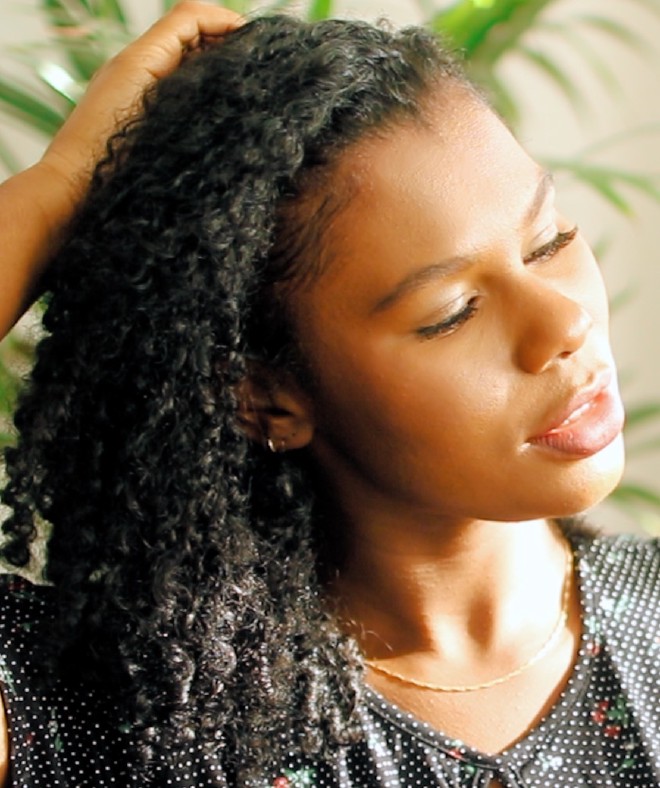If there’s one hair product you need to master, it’s deep conditioners. Whether you want stronger, fuller, shinier or just healthier hair - deep conditioners are a must for any hair regimen. And I just so happen to have the perfect recipe to get you started!
Recipe
Water Phase
- 134g Water
- 8g Glycerine
- 4g Hydrolysed Wheat Protein
- 2g Coconut Milk Powder
Oil Phase
- 20g Shea Butter
- 10g Castor Oil
- 12g Emulsifying Wax (Olive-derived)
- 6g Cetyl Alchohol
Cool Down
- 2g Preservative Eco
- 2g Vitamin E Oil
- 2g (max) Essential Oils
Method
- Measure out your water phase Ingredients: distilled water, glycerine, hydrolysed wheat protein & coconut milk powder, and your oil phase ingredients: shea butter, castor oil, emulsifying wax & cetyl alcohol
- In two separate heatproof containers, combine your water phase ingredients and your oil phase ingredients. Over a low heat (e.g. using a bain-marie, water bath or double boiler), melt both phases
- Once the oil phase is melted, and the water phase has been heated, pour the oil into the water and whisk together. Transfer onto a flat surface
- To create your emulsion, thoroughly mix with an immersion blender. As the deep conditioner cools, it will begin to thicken and develop a thick and creamy consistency. If your mixture isn’t thickening, allow it to cool for a couple of minutes before continuing the blend
- When you’re happy with the consistency, allow the mixture to further cool
- Use a scale to add your cool down ingredients: preservative, antioxidant (vitamin E) and any essential oils you prefer for fragrance
- Briefly mix again using the immersion blender to ensure that your ingredients are evenly distributed
- Store your deep conditioner in a tub-style container for easy access
This recipe makes 200g of deep conditioner. See the interactive deep conditioner formula calculator to customise this recipe.
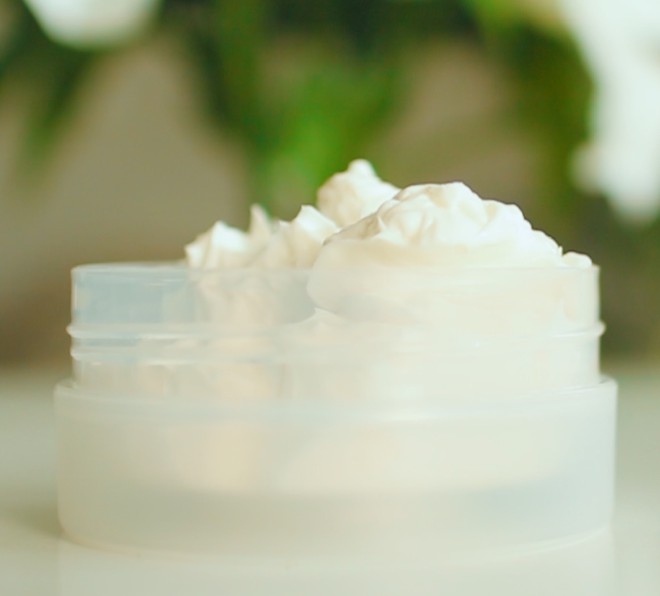
What are deep conditioners?
Deep conditioners are like the facials of the hair world. They take a little extra time, but boy are they worth it! They’re intensive, moisturising treatments intended to penetrate deep into the hair shaft to moisturise, strengthen and improve the quality of your hair. Unlike with regular conditioners, deep conditioners are designed to give long-lasting moisture with visible effects felt almost immediately after rinsing out.
Deep conditioners are emulsions, meaning that they contain both oil and water-based ingredients. This can be a little overwhelming, but at its core, deep conditioners are lotions for your hair. They require the same basic ingredients and work in the same way.
The water ingredients penetrate your hair shaft pumping it full of hydration, whilst the oil-based ingredients seal in the moisture to avoid your hair drying out. Oils, butters, proteins, botanicals, hydrosols, vitamins… you can add almost anything you want to make unique formulations that suit your hair’s needs.
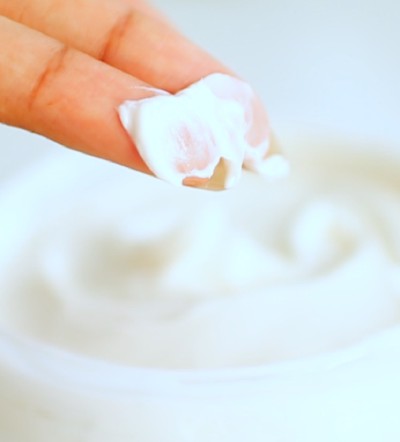
What’s the difference between deep conditioners and regular conditioners?
One word. Penetration. Regular conditioners moisturise the surface of your hair - they have some penetration capabilities but they mainly smooth the outer cuticle layer, coating the hair strand to soften and reduce frizz. Many will include a cationic surfactant which helps to bind the conditioner to your hair shaft so that it’s visibly more manageable and easier to comb through. This is why they’re often great detanglers. Conditioners do contain oil, but they’re kept to only around 10% of the formulation so that it’s still runny enough to use in a squeeze or pump bottle.
Deep conditioners do all of the above, and then some! Oils, butters, proteins and other moisturising agents have different absorption rates with some taking up to 30 minutes. Most conditioners have already moved out of your hair’s temporary lodging and are but a distant memory by then! Deep conditioners are designed with the intention of taking full advantage of your hair’s absorption ability. This is why the results of deep conditioners are usually incomparable to that of a basic conditioner.
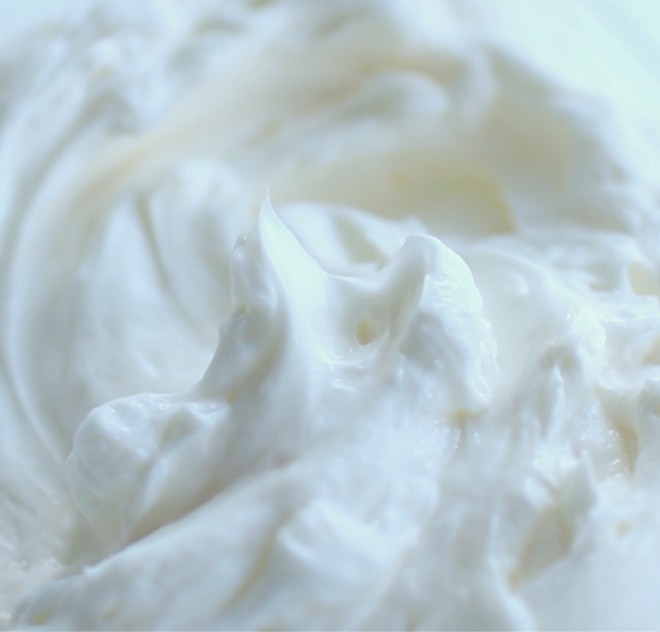
Why should you use deep conditioners?
If you’ve read my previous deep dive into hair masks, you’ll know that your hair as a non-living structure is unable to repair itself once damaged. As such, products like shampoo, conditioners and moisturisers play a vital role in maintaining the health and appearance of your hair.
A single hair shaft consists of 3 layers: the cuticle, cortex and in some cases the medulla. The outer cuticle is what you see when you look at your hair, so it’s the most targeted when it comes to hair products. It prevents damage to the hair’s inner structure and also controls the amount of water, maintaining your hair’s hydration. The cortex houses the protein that gives your hair its strength; it also determines the colour and texture of your hair. Finally, the medulla at the centre is present in thicker, textured hair and is more common in afro or darker coloured hair.
Deep conditioners contain ingredients that can penetrate the cuticle and even into the cortex - making them one of the few exceptionally effective hair treatments.
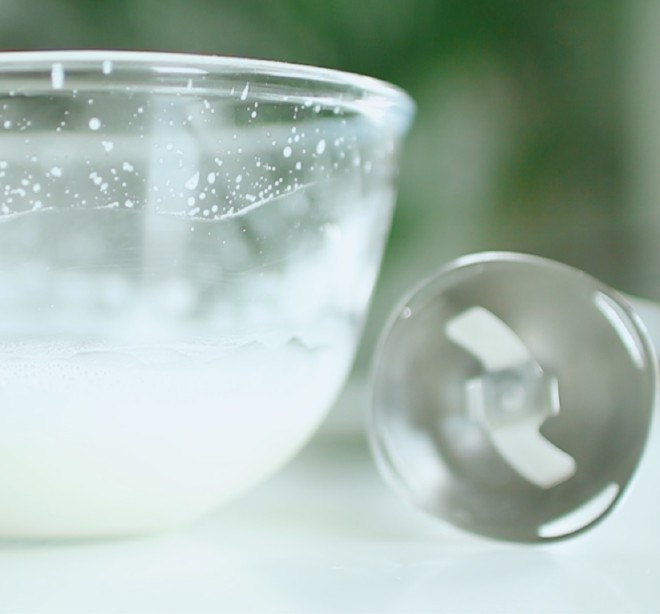
How do deep conditioners hydrate your hair?
The water in deep conditioners is crucial in aiding with the hydration in your hair. Without a constant supply of hydration, our hair is dry, brittle and prone to damage and breakage. But it’s not all doom and gloom, in addition to the water in our deep conditioner, we can boost its hydration points by adding in a few extra ingredients.
Humectants
Humectants attract water, like a magnet they can pull water from their surroundings and hold onto it so that they hydrate whatever they’re attached to. They’re great to include in moisturisers for both hair and skin. The excess water that humectants attract can penetrate into your hair shaft, leaving hair more supple, softer and flexible. This is especially true for kinky or curly hair types that get the added boost of bouncier, more defined curls.
But not all humectants work the same! They can be used for a variety of different purposes, so it’s important to make sure you include the right humectant for the job. Here a few that work well for attracting water:
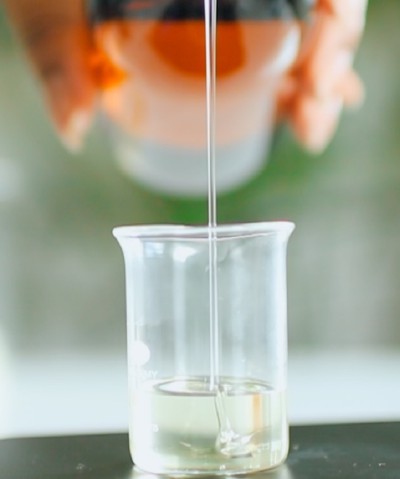
- Glycerine - is anyone surprised? This is my go-to humectant as it’s inexpensive and easy to get ahold of. It’s also completely plant-based and vegan friendly whilst also extremely unlikely to cause irritations so it’s a win all round!
- Honey - another all-natural humectant. Honey and glycerine can be used interchangeably for most recipes and have the same “sticky” consistency. This tacky feel is usually unnoticeable when kept to a maximum of 2% in formulations.
- Hyaluronic acid - for any big spenders out there - is an incredibly powerful humectant and can hold up to 1000 times its own weight in water. But all that water-attracting power comes at a price so bear that in mind.
- Panthenol (pro-vitamin B5) - in addition to attracting water, it’s also amazing at conditioning the hair leaving you with moisturised, fuller-looking strands.
Coconut milk
Coconut milk is a nutrient-rich ingredient made from the white flesh of coconuts mixed with water, this is also where coconut oil is derived from. Coconut milk has several benefits, particularly for the hair where it can prevent the loss of hair proteins, leading to stronger, more resilient hair.
Coconut milk is high in both protein and fatty acids which are extremely beneficial to your hair.
- Protein found in coconuts aid in strengthening your hair and is particularly helpful for thin or damaged hair that’s prone to breakage, (e.g. Keratin protein or Collagen protein)
- Lauric acid is a fatty acid capable of penetrating the hair shaft due to having a small molecular mass. This makes hair less prone to damage from external forces like combing or detangling
Coconut milk powder is a convenient way to get the benefits of this nutrient-dense ingredient. It’s also possible to substitute this with colloidal oatmeal.
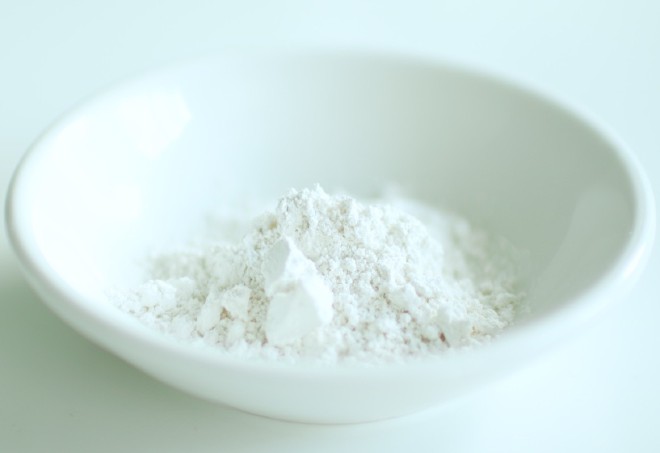
How to add protein deep conditioners?
Raiding your pantry for eggs and mayonnaise isn’t actually a bad idea when it comes to your hair. As proteins, they’re able to provide some strengthening properties but they’re short-lived and disappear as soon as you rinse them out of your hair. For real protein we have to think a little bigger, well in this case… smaller!
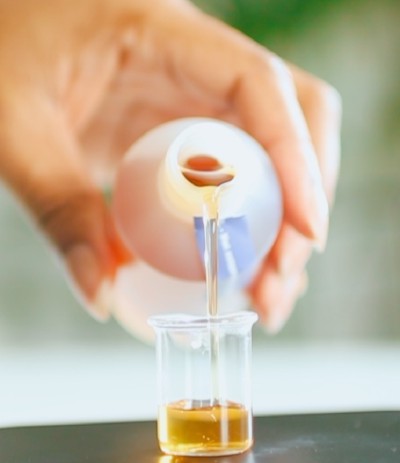
There are several types of hydrolysed protein, some with smaller molecules (silk, keratin & collagen) and others are larger-sized (wheat, oats & quinoa). Proteins are water-soluble and can’t usually be added to anhydrous products like my hair mask recipe. But that’s the beauty of homemade deep conditioners! They make it possible to achieve salon-quality products at home with all-natural ingredients.
Benefits of protein for hair
Protein is able to fill gaps caused by damage to the cuticle layer of your hair, it’s also able to penetrate into the hair shaft to strengthen and reinforce the strand. Hydrolysed protein forms a film on the hair that retains moisture and prevents it from drying out. This leads to a plumping effect on hair, leaving you with thicker, more resilient hair which is less like to break or experience split ends. Protein is particularly effective on kinky, curly, chemically processed, or damaged hair as it’s one of the few ingredients that can actually minimise the damage done to your hair. It’s great for hair that is vulnerable or prone to damage and can be added to a variety of hair products to provide a strengthening boost. Benefits include:
- Fuller, thicker or more voluminous hair
- Stronger hair with tighter and bouncier kinks & curls
- Softer, smoother hair with shine
- Moisturised, with restored elasticity
The small amount of protein included in this deep conditioner recipe is fine for regular use, however, it’s important to note that some people are protein sensitive. As a guide, here are the hair types that will benefit from including protein in their hair products:
- Noticeable breakage or split ends
- Dry, brittle hair that’s prone to snapping & snagging
- Chemically processed hair: relaxed, texturised, permed, bleached or dyed
- Loss of elasticity, loose curl pattern or limp hair
The inclusion of hydrolysed protein will not result in a full protein treatment, but this is a way to provide strengthening properties to your deep conditioner.
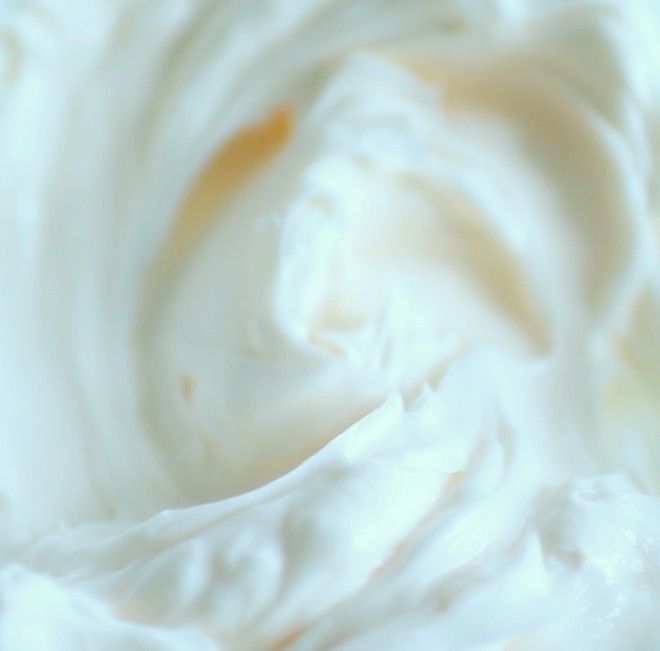
Why do we need Emulsifiers & Stabilisers?
So we’ve packed a lot of ingredients into our deep conditioner, and unfortunately - not all of them get along! The main offenders? Water and oil. If you’ve made my moisturising hair cream, you’ll be familiar with emulsifiers. Essentially, they allow both oil and water to mix together, creating a stable emulsion (in this case deep conditioner) that grants you the power to hydrate, moisturise & seal all at once! Stabilisers like the name suggest help to ensure that once mixed together (thanks to the emulsifier), the oils and water stay together and don’t separate.
What are emulsifiers?
Emulsifiers are surfactants, but instead of being used to cleanse - emulsifiers are able to mix water and oil together because they contain both hydrophilic (“water-loving”) and hydrophobic (“water-fearing” or “oil-loving”) elements.
It is common for emulsifiers to be made up of just one ingredient or a blend that helps to increase its effectiveness. When emulsifiers are a blend of ingredients that usually contain some fatty acids, they’re often called “emulsifying wax”. There are several naturally derived emulsifiers that you can choose from; here are a few:
- Olivem 1000 or Olive Oil-derived Emulsifiers
- Vegetal/Montanov 68
- Emulsifying Wax NF or Emulsifying Wax BP
- ECOMulse/NatraMulse
- Liquid Lecithin
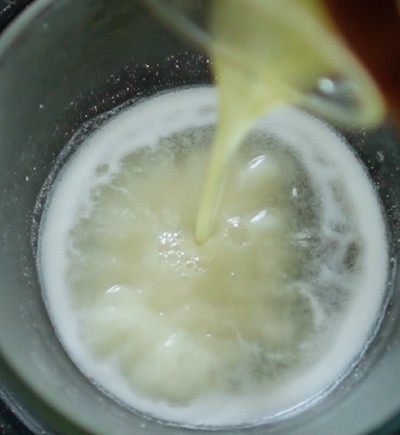
A common misconception is that Beeswax or any of its vegan alternative are emulsifiers. This is not true, beeswax has some stabilising qualities to help emulsions stay together, but beeswax is unable to create emulsions.
What are stabilisers?
Emulsions can be slippery - pun intended! Whilst it is possible to successfully bind oil and water together using an emulsifier, they can still be prone to separate. Stabilisers or thickeners are used to make sure that our emulsions stay together in order to create a stable product.
You can make creams and lotions without using stabilisers. In fact, my beginner’s natural lotion tutorial and intensive oat moisturiser don’t contain stabilisers. But as we move to more advanced formulations, they’re a good idea to include. Particularly with products that are exposed to temperature variations or kept (like our deep conditioner) in a hot steamy bathroom - stabilisers are a must!
There are two types of stabilisers: oil-based and water-based. Natural gums like xanthan gum are great to thicken and stabilise water-based products, and can also be added to the water phase in emulsions. However, for anhydrous products or emulsions, fatty alcohols are a great natural stabiliser.
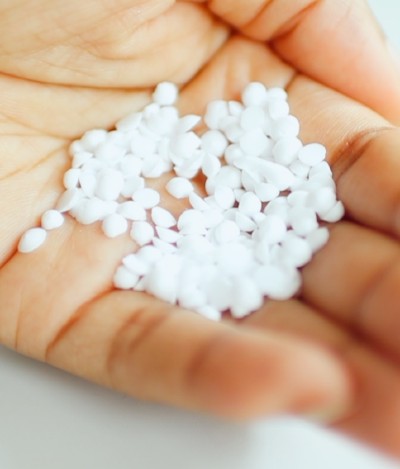
In my conditioning hair mask tutorial, I used cetyl alcohol to provide slip and improve the texture of our mask, but fatty alcohols in addition to being excellent emollients are also used to stabilise emulsions. Common choices are:
- Cetyl alcohol
- Stearyl alcohol
- Cetearyl alcohol (mixture of cetyl alcohol and stearyl alcohol)
- Behenyl alcohol
- Lauryl alcohol
By including a stabiliser, we ensure that the oils and water remain emulsified, resulting in a smooth, creamy texture that allows our deep conditioner to glide through our hair effortlessly. In addition to stabilising, we also get all of the emollient benefits of fatty alcohols which aid in moisturising our hair and smoothing down the cuticle for less frizz and lasting moisture.
How To Apply Deep Conditioners
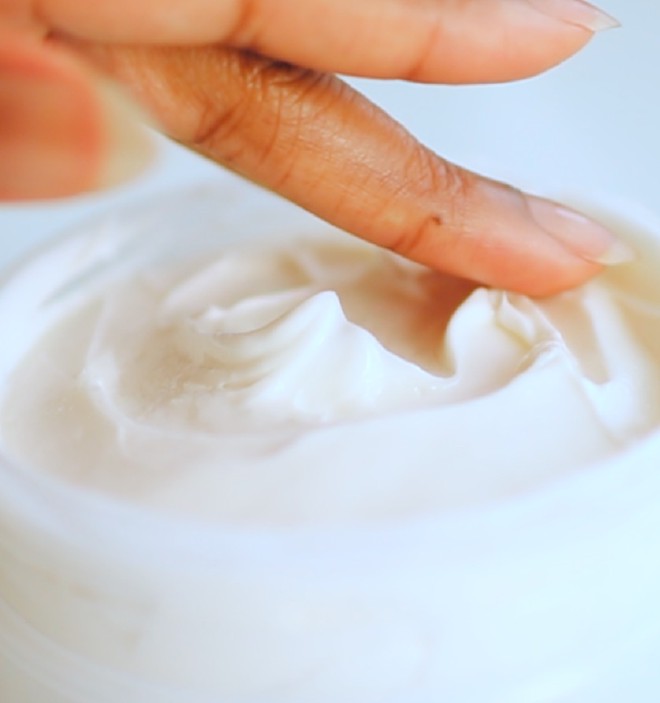
Deep conditioners work best on clean hair and should be applied after the shampoo stage.
As mentioned earlier, to allow for full penetration and maximum absorption of your deep conditioner, it is necessary to leave this on your hair for a minimum of 30 minutes - but no longer than one hour.
At the point of maximum absorption, the hair has absorbed all it can and the conditioner will only sit on the outside of your strands. Unlike with hair masks, it’s not advised to use deep conditioners as an overnight treatment.
In order to get the most out of your deep conditioner, try out the following tips:
- Apply heat: Heat around 35°C aids in the absorption of the deep conditioner - leading to even softer, luscious hair! Try either wrapping your hair in a heated towel, sitting under a hooded dryer or using in a steam room to boost its effects
- Apply regularly: Our hair isn’t going to repair itself, so regular deep conditioning not only makes our hair more resilient but minimises the damage over time. Once a week is a good goal to aim for but tailor this to your hair’s needs
- Apply alone: Deep conditions are like supercharged regular conditioners and therefore you don’t need to use any other rinse-off conditioning products. Avoid deep conditioning in the same wash cycle as co-washing or using a regular shampoo. You can have too much of a good thing so for best results use conditioning agents only when needed.
Deep conditioners are a rinse-off product so use as much as you need to make sure that all your hair is evenly coated, we don’t do dime-sized amounts around here! This has to be my biggest pet peeve with products aimed at natural hair. We’ve got a lot of hair, so we need a lot of product! But this can lead to your haircare bills racking up.
Fortunately, deep conditioners are incredibly cost-effective as they’re still about 70% water. The moisturising agents go a long way, making this an affordable way to ensure that our hair gets the very best treatment.
